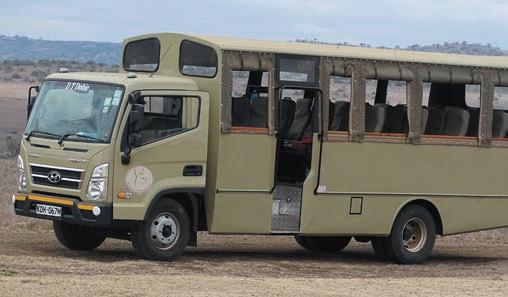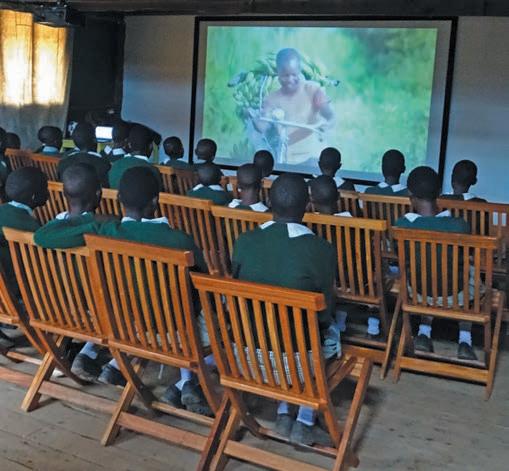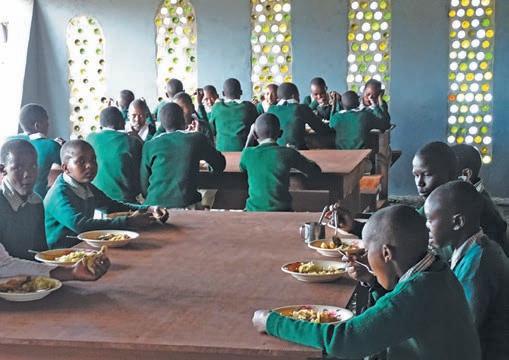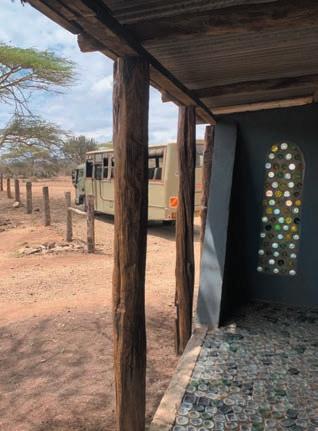
3 minute read
Kenya Mazingira Yetu: ‘Our environment’
Mazingira Yetu: ‘Our environment’
Effective, long-term conservation of wildlife and landscapes not only needs projects to protect areas or animals. It needs people, especially those living in and around such landscapes, to recognise the importance of resilient and thriving ecosystems.
Advertisement
Izzy Voorspuy | Conservation and Sustainability Officer, Borana Conservancy
Unfortunately, many young people are now growing up in degraded landscapes. On top of this, environmental science is generally taught theoretically, often without exposure to intact, functioning and healthy ecosystems. Living in a degraded landscape could become the new normal.
To provide the opportunity for people to learn about the importance of healthy ecosystems, we’ve developed a conservation education programme at Borana. ‘Mazingira Yetu’, which translates to ‘Our Environment’ in English, will provide a space for people to find out about the importance of natural wilderness and how individual elements contribute to sustaining all forms of life. Given Borana’s location in the Ewaso Nyiro ecosystem, just north of the Equator in Kenya, this is particularly important. We live in a landscape where the seasonality of rainfall is becoming increasingly erratic, most likely due to the impact of climate change.
IMAGES BORANA CONSERVANCY Our long-term aim at Borana is to provide a sustainable ecosystem, in partnership with our neighbours and community, for species on the brink of extinction. However, the survival of Borana’s rhinos and other wildlife is threatened by the unsustainable use of natural resources and rangelands across our region. Through Mazingira Yetu, we want to increase
Left: The Mazingira Yetu building has been built sustainably using local and recycled material from in and around Borana Conservancy.
the long-term security of the wildlife and habitat of the landscape, by nurturing and growing local people’s love and understanding of the natural world and its conservation, through applied citizen science.
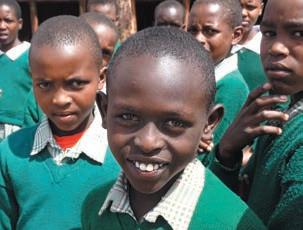
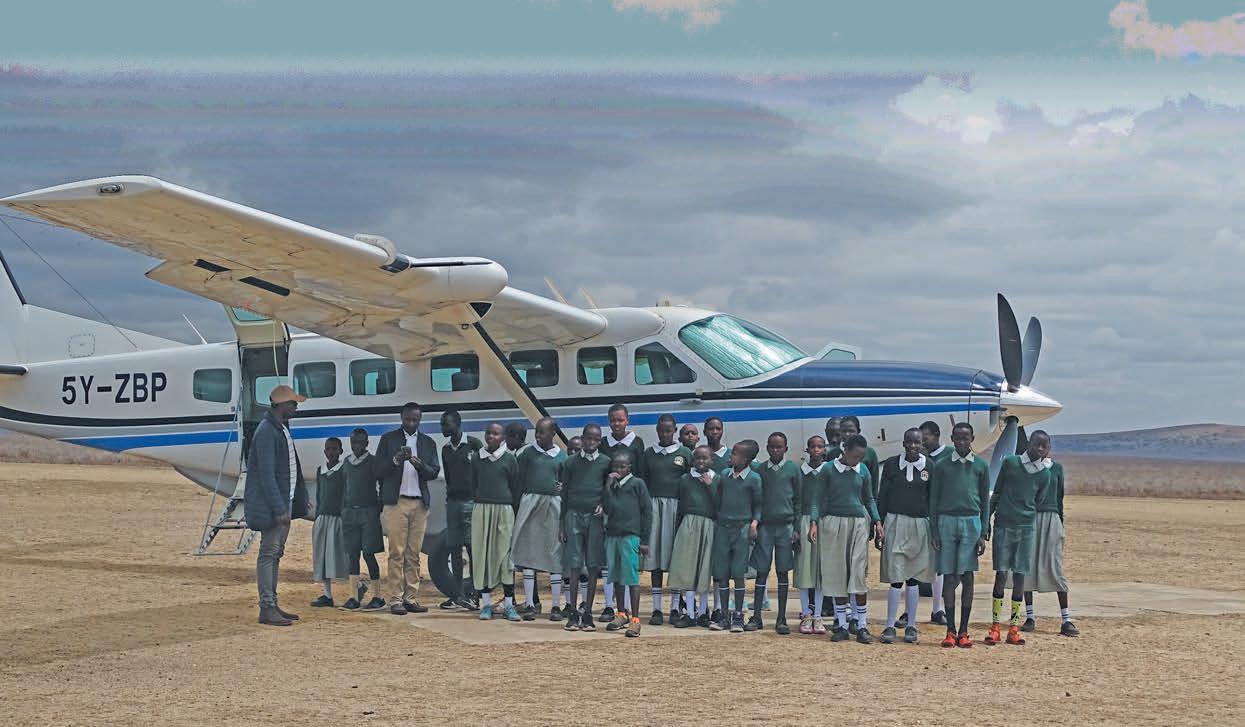
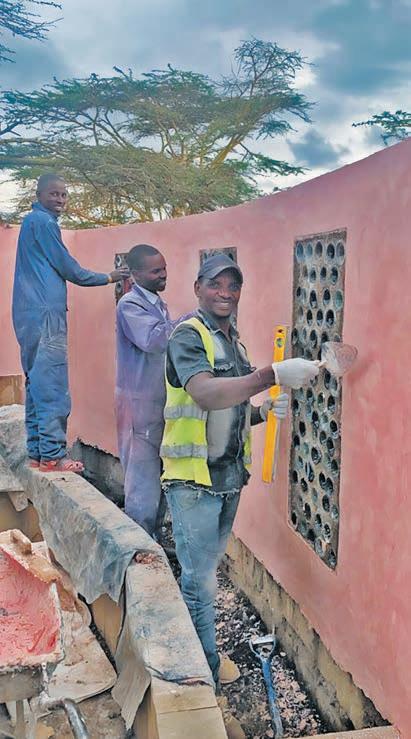
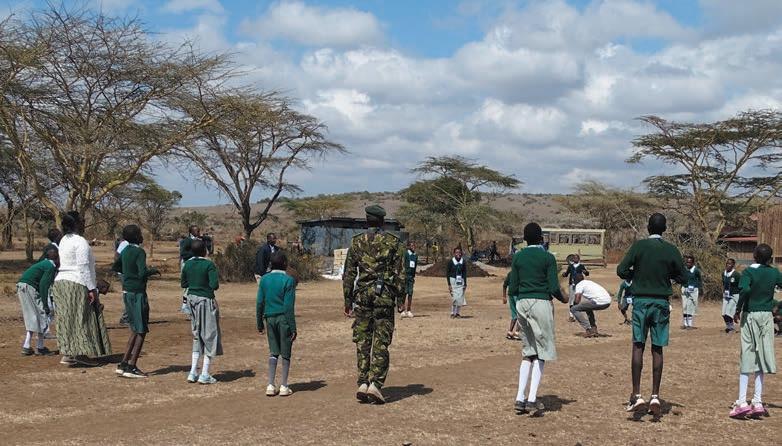
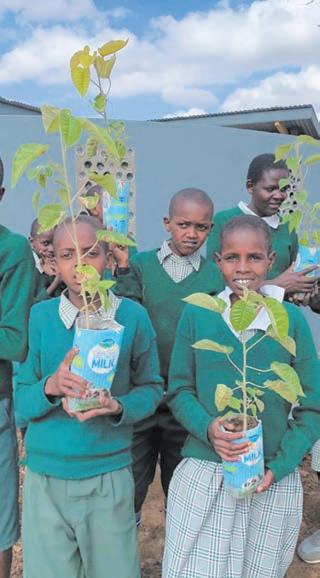
After numerous ideas, meetings, and planning sessions with people in and around Borana, particularly with local teachers, the programme was officially launched in April 2022, when a Conservation Education Officer and an Education Assistant were employed. Since then, we have built a Conservation Education Centre at Borana HQ, sourcing local, sustainable materials to create an environment-friendly learning location. In July 2022, we welcomed our first visitors into Borana on our new, specially adapted bus, the Mazingira Express!
Each visit will bring groups of schoolchildren (Grades five and six), their teachers, and adults from community groups within the villages and forests surrounding Borana. These regular Conservation Trips will offer more access to important ecological landscapes, providing a chance to strengthen the humannature connection and explore the value of conservation in practical ways. Our hope is that each visit builds knowledge and inspires participants to spread conservation messages to friends, family members and others in their community.
The long-term future of Borana Conservancy, and of all protected areas across Laikipia, Kenya and Africa as a whole, will depend on everyone placing a high value on our environment. And, it will depend on all of us having the skills to manage habitats in ways that support both human livelihoods and wildlife populations. Through the Mazingira Yetu programme, Borana hopes to bring more people into the Conservancy and inspire a deeper connection with the natural world.
